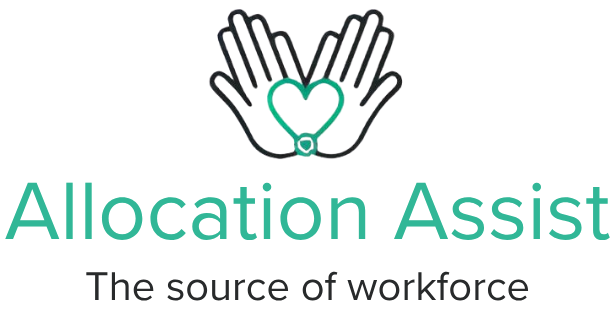You’ll find a drastically transformed healthcare landscape since COVID-19, with hospitals experiencing unprecedented turnover rates of 106.6% over five years. Healthcare workers have shifted toward remote-enabled roles, particularly in behavioral health, which saw an 84% surge in office-based positions. While burnout rates improved from 39.8% to 35.4% between 2022-2023, the industry now emphasizes mental health support and competitive wages to retain talent. Understanding these shifts reveals essential strategies for workforce sustainability.
The Great Healthcare Exodus: Understanding Post-Pandemic Turnover

While healthcare turnover rates show modest improvement from their pandemic peaks, with hospital turnover dropping from 20% to 18% between 2022 and 2024, the industry continues to face unprecedented workforce challenges. You’ll find the most alarming turnover trends among nursing staff, where “other nursing” positions face a 24% exodus rate, while RNs maintain a 17% turnover rate. Workforce engagement metrics signal trouble ahead, with hospitals having churned through 106.6% of their total staff over the past five years. Mental health support remains a critical concern as healthcare workers grapple with post-pandemic stress. The financial toll is staggering, with hospitals spending an average of $5.8 million annually due to staff turnover.
The generational divide compounds these challenges, as Gen Z workers exit at an astounding 38% rate, while Millennials follow at 22%. Together, these two generations represent half of today’s healthcare workforce, making their retention essential for maintaining operational stability. Nearly half of healthcare facilities face additional leadership instability as 46% of executives contemplate leaving their organizations within the year.
Measuring Emotional Impact: Burnout Statistics and Trends
Behind the concerning turnover statistics lies an even more pressing challenge: widespread burnout among healthcare professionals. You’ll find burnout rates soared from 30.4% in 2018 to 39.8% in 2022, with primary care physicians experiencing the highest impact at 57.6%. The trend showed notable stability until experiencing a significant decline post-pandemic. Research indicates that moral injury from witnessing patient suffering contributes substantially to healthcare worker distress. Healthcare workers face unprecedented stress levels, with long work hours reported by 47% as a primary contributor to burnout.
| Burnout Factor | Impact % | Key Solution |
|---|---|---|
| Staffing Shortages | 49% | Strategic workforce planning |
| Excessive Workload | 47% | Telework implementation |
| Safety Concerns | 32% | Enhanced protection protocols |
While emotional resilience remains critical, workplace support and stress management strategies show promise. Telework benefits have emerged as an effective recovery strategy, with remote workers reporting lower burnout rates. To combat administrative burdens and improve mental health outcomes, healthcare organizations must prioritize staffing solutions and streamline documentation processes. The data suggests that addressing these core issues could profoundly reduce burnout rates, which have only recently begun showing signs of improvement at 35.4% in 2023.
Shifting Career Paths in Healthcare Employment

Since the pandemic’s onset, healthcare employment patterns have undergone dramatic shifts, revealing distinct winners and losers across different sectors. You’ll find office-based behavioral health leading the change, with an extraordinary 84% employment surge driven by telehealth opportunities. Meanwhile, traditional institutional settings struggle to maintain staffing levels. The overall healthcare sector experienced a major employment drop of nearly 7% during the second quarter of 2020. The workforce demonstrated remarkable resilience, reaching 24.4 million jobs by the third quarter of 2024.
Career changes heavily favor outpatient and remote-enabled roles, with physician offices exceeding pre-pandemic growth projections by 1.2%. You’re seeing healthcare workers increasingly gravitate toward flexible, lower-stress environments, particularly in behavioral health practices. This migration has left skilled nursing facilities and intensive care settings grappling with persistent shortages. With nursing homes facing staffing levels 10% below their pre-pandemic benchmarks, the quality of patient care remains at risk. By 2024, while the overall healthcare sector has rebounded above pre-pandemic levels, the distribution of workers reflects a fundamental reshaping of career preferences toward more sustainable, technology-enabled practice models.
Wage Evolution Across Medical Professions
You’ll find that nursing professionals have experienced the most substantial wage increases in healthcare, with skilled nursing care workers seeing a remarkable 26.5% jump from 2020-2024. While hospital-based workers enjoyed 20.3% wage growth during this period, their counterparts in physician offices lagged behind at 12.3%. The geographic divide in healthcare compensation continues to widen, though locum tenens positions offer strategic opportunities to bridge urban-rural pay gaps through mobility-based incentives. Nurse practitioners are commanding especially competitive salaries due to expanded scope-of-practice reforms that grant them greater autonomy in patient care. Overall healthcare employment has shown resilience with 10.8% of jobs now being in the healthcare sector, marking significant growth from previous decades. The profession continues to attract talent with median annual wages of $80,820 for healthcare practitioners and technical occupations.
Nursing Pay Leads Growth
Recent wage data reveals skilled nursing care workers experienced the highest compensation growth among healthcare sectors, with a striking 26.5% increase from $671 to $849 per week between 2020-2024. This surge in nursing salary trends outpaces both hospital and physician office wage growth, reflecting evolving healthcare workforce dynamics. The persistent growth in wages directly correlates with over 13,000 positions remaining unfilled in primary care.
| Sector | Wage Growth | 2020 Weekly | 2024 Weekly |
|---|---|---|---|
| Nursing Care | 26.5% | $671 | $849 |
| Hospitals | 20.3% | $1,269 | $1,527 |
| Physician Offices | 12.3% | $1,443 | $1,620 |
| NP/PA Roles | 12.0% | $114K/yr | $128K/yr |
You’ll notice that while nursing care leads percentage growth, absolute wages remain highest in physician offices. Rural communities and high-demand areas continue driving competitive compensation packages, particularly in states granting full practice authority to nurse practitioners.
Regional Pay Gap Widens
The persistence of healthcare wage disparities reveals troubling trends across medical professions, with women earning just 76 cents for every dollar earned by their male counterparts in 2023. Regional salary discrepancies have intensified post-pandemic, particularly between urban and rural areas where workforce shortages drive healthcare wage competition. Women represent 67% of the total healthcare workforce yet continue to face systemic wage discrimination across all specialties. Hispanic women face even greater inequity, earning 57 cents per dollar compared to white non-Hispanic men in the field. Essential workers in healthcare and social services have seen minimal improvement since the pandemic, with wage gaps widening despite their crucial roles.
You’ll find the gaps are most pronounced in specialized fields, where female physicians earn only 70% of men’s wages, while community-based workers show slightly better parity at 86%. The situation’s even more complex when you factor in geographic variations women earn about 80 cents per dollar compared to white men across nearly every U.S. county. With 1.9 million annual healthcare job openings projected, employers are now adjusting compensation strategies, with 69% of healthcare support managers planning to increase starting salaries for on-site roles by 2025.
Regional Disparities in Healthcare Staffing

Looking at the stark regional contrasts in healthcare staffing, you’ll find severe shortages exceeding 25% in states like Georgia and California, while the Midwest maintains a surplus of over 7,000 RNs. You’ll notice these disparities are particularly pronounced between urban and rural settings, where understaffed rural facilities often operate with skeleton crews and struggle to compete with urban centers’ higher wages. State policies and regional economic factors directly influence these staffing imbalances, as evidenced by the Northeast’s relatively lower shortage rates of 6.60% compared to California’s projected deficit of 106,310 RNs by 2036.
Urban-Rural Staffing Gaps
While urban healthcare facilities grapple with post-COVID challenges, rural communities face a far more severe staffing crisis, with only 10% of physicians serving 20% of America’s population. You’ll find rural healthcare particularly vulnerable as over half of rural physicians are 50+ years old, projecting a 23% decline by 2030.
| Impact Area | Urban Centers | Rural Areas |
|---|---|---|
| Physician Age | Mixed Demographics | 50+ Majority |
| Mental Health Coverage | Adequate | 61.85% Shortage |
| Specialist Access | Readily Available | Limited/None |
The staffing shortages in rural settings create a domino effect: physicians experience burnout from expanded roles, hospitals reduce services, and communities lose access to specialized care. You’re seeing this crisis deepen as economic disparities and limited infrastructure continue deterring new talent from filling these critical gaps.
State Policy Impact Analysis
Since implementing post-pandemic staffing policies, states have adopted drastically different approaches to healthcare workforce management, creating a patchwork of regulations that directly impact patient care quality and worker retention. You’ll find that five states strengthened staffing ratios while Georgia loosened requirements, highlighting significant regulatory challenges across regions.
State policy variations have created notable healthcare disparities, with some regions offering robust economic incentives like loan repayment programs and childcare support, while others struggle with credentialing barriers and restrictive telehealth policies. Workforce stability initiatives vary widely from mandatory patient-to-nurse ratios in California to expanded nurse licensure compacts in other states. Training requirements and cross-border practice restrictions continue to influence regional workforce distribution, though innovative approaches like virtual nursing and remote care options show promise in addressing these gaps.
Wage Disparity Across Regions
Regional wage disparities in healthcare staffing have created significant economic fault lines across the U.S. healthcare system. You’ll find stark contrasts between urban and rural healthcare employment geography, with Mountain View’s $19.20 hourly wage far exceeding California’s $16.50 state minimum. Meanwhile, rural facilities struggle with lower wage floors of $18.63 for Medicare/Medi-Cal-dependent hospitals.
These regional wage disparities are amplifying staffing challenges. Large metropolitan areas like Oakland offer premium wages of $24.98 for hotel workers without benefits, while rural hospitals won’t see increases until 2026. The growing demand-supply gap in healthcare workers by 2025 will likely worsen these geographic inequities. You’re seeing this play out dramatically in specialty facilities like dialysis clinics, which must compete aggressively for talent across varying wage zones.
Mental Health and Resilience Among Medical Staff
Throughout the COVID-19 pandemic, healthcare workers faced unprecedented mental health challenges that continue to impact the medical workforce today. Recent data shows that 25.6% of healthcare workers report considerable mental distress, yet only 38% seek treatment. Mental health initiatives are essential, as suicidal ideation rates range from 3.6% to 8.4% among medical staff.
You’ll find that support networks and resilience training are critical, as supervisor support greatly reduces anxiety and depression symptoms. However, barriers persist – including scheduling conflicts, confidentiality concerns, and cost. Healthcare organizations must prioritize workforce wellness by addressing these obstacles and implementing extensive coping mechanisms. The data suggests that traditional interventions aren’t meeting staff needs, indicating it’s time to reimagine how we support our medical professionals’ mental health.
The Transformation of Healthcare Workplace Culture
As healthcare organizations emerge from the pandemic, significant transformations in workplace culture reveal concerning trends in team dynamics and operational resilience. You’ll find a 1.9% decline in favorable teamwork climate, with 35% of facilities experiencing deteriorated workplace dynamics and team cohesion.
Leadership engagement and communication strategies have become paramount, as remote collaboration reshapes traditional workflows. You’re seeing new challenges in safety culture, particularly in ICUs where 70% of staff report insufficient energy post-shift. Role changes and flexibility challenges have pushed organizations to implement enhanced employee support systems.
Mental wellness initiatives are now critical, though stigma persists. You’ll need to focus on strengthening remote collaboration tools, expanding wellness resources, and maintaining transparent communication channels to rebuild workplace dynamics in this transformed healthcare landscape.
Adapting to New Healthcare Workforce Demands
Healthcare organizations face unprecedented workforce challenges, with monthly exits reaching 626,000 workers at their peak and sustained turnover rates of 20.7% threatening operational stability. You’ll need to implement strategic changes to address these evolving demands, focusing on workforce flexibility and mental health support.
| Key Challenge | Strategic Response |
|---|---|
| Staff Burnout | Enhanced mental health resources & support programs |
| Work-Life Balance | Flexible scheduling & hybrid work options |
| Career Growth | Proactive upskilling & development paths |
| Retention | Competitive benefits & improved work conditions |
Today’s healthcare workforce requires a fundamental shift in organizational approach. With 93% of workers reporting stress and 77% experiencing frustration due to workload, you must prioritize thorough support systems. This includes implementing staffing ratio mandates, offering dependent care benefits, and creating clear career advancement opportunities to remain competitive in attracting and retaining talent.
Strategic Solutions for Staff Retention and Growth
While healthcare organizations grapple with unprecedented turnover rates, implementing data-driven retention strategies has become essential for long-term sustainability. You’ll find successful organizations adopting multi-faceted approaches that address both immediate and systemic challenges. By implementing transformational leadership styles and structured training programs, you’re better positioned to foster engagement and professional growth.
Your retention initiatives should prioritize staff wellness through mental health support and flexible work arrangements. Consider launching nurse residency programs, which show a 3.8/5 effectiveness rating, alongside targeted recruitment strategies that appeal to diverse demographics. You’ll need to balance financial incentives with sustainable workforce development, including volunteer-based overtime systems and modified care models. These extensive solutions help create a resilient healthcare workforce that’s equipped to meet evolving industry demands.
Frequently Asked Questions
How Has Telehealth Adoption Affected Healthcare Workers’ Daily Routines and Job Satisfaction?
You’ll find that telehealth benefits have considerably transformed your daily workflow, with 86.5% of physicians now embracing remote care delivery. You’re experiencing greater job flexibility through hybrid care models, which comprise 17% of all visits. Your satisfaction likely aligns with the 62% of clinicians reporting improved patient outcomes. However, you’ll need to balance these advantages against increased administrative tasks and the ongoing challenge of managing digital platforms.
What Percentage of Healthcare Workers Pursued Additional Certifications After COVID-19?
While exact percentages vary by specialty, you’ll find that certification trends show significant increases post-COVID-19. Around 30% of healthcare workers pursued CNA training through HPOG programs, and nearly half of HHA/PCAs sought additional credentials for home-based care. Workforce development data indicates that specialty certifications, particularly in telehealth, infection control, and mental health support, saw the highest uptake. You’re seeing the strongest growth in nursing-related certifications and emergency response training.
How Have Workplace Safety Protocols Changed for Non-Covid Medical Procedures?
You’ll notice significant protocol updates in non-COVID medical procedures, with enhanced safety training requirements across all healthcare settings. You’re now required to use eye protection during standard procedures, and you must follow stricter donning/doffing protocols. You’ll need to maintain combined standard, contact, and airborne precautions, while respirator fit-testing frequency is customized to your specific workflow. Pre-surgical screening for respiratory pathogens has also become standard practice in many facilities.
What Impact Did Healthcare Worker Migrations Have on Rural Communities?
Healthcare worker migrations severely impacted rural communities, creating critical staffing gaps. You’ll find that rural healthcare facilities experienced a 96% shortage rate as medical professionals moved to urban areas or left the field entirely. Worker shortages led to service suspensions, particularly in specialized care like obstetrics. When combined with increased workloads and stress, remaining staff faced higher burnout rates, creating a cycle of departures that further strained rural healthcare delivery systems.
How Has Medical Education Adapted to Prepare Students for Post-Pandemic Challenges?
You’ll find that medical education has undergone significant curriculum innovations, emphasizing virtual learning platforms and simulation training. You’re now experiencing a blend of AI-powered simulations and telemedicine clinics that prepare you for modern healthcare delivery. You’ll notice competency-based frameworks have replaced traditional timelines, while virtual patient interviews and live-streamed procedures enhance your clinical exposure. You’re also gaining vital skills in cultural humility and mental health management.









